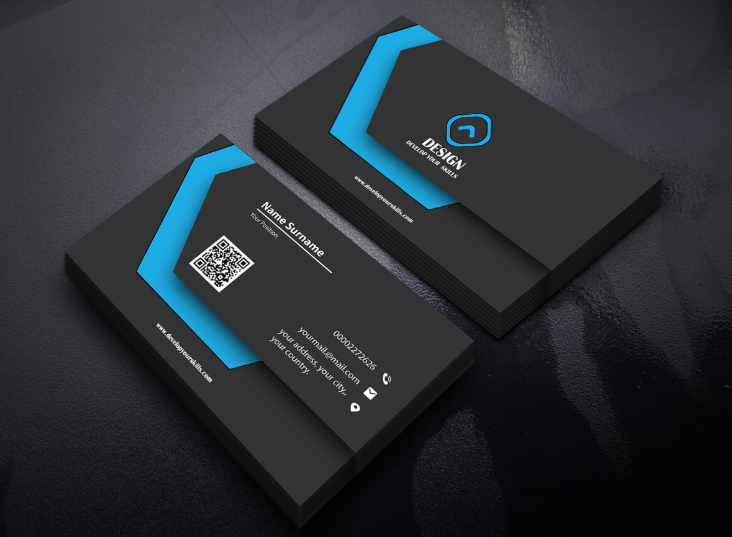A Beginner’s Guide to Creating Your Own Networking Cards
Think about the last time you met someone at a coffee shop, a conference, or even at a friend’s dinner party. You hit it off, had an engaging conversation, and right before parting ways—you wished you had something more memorable than just typing your number into their phone. That’s where networking cards come in.
A networking card (often called a business card, but with more personal flair) is still one of the most effective ways to leave a lasting impression. Even in our increasingly digital-first world, the humble card works like a handshake that people can take home with them. And the best part? You don’t need to be a professional designer or have a massive budget to create your own.
In this beginner’s guide, I’ll walk you through how to create networking cards that actually represent who you are, why they still matter, and some simple tools and tips to help you design one that people will remember.
Why Networking Cards Still Matter in a Digital Age
It might feel like LinkedIn or exchanging Instagram handles has replaced the need for physical cards—but here’s the truth: people love having something tangible. A card can make you stand out, especially when everyone else is defaulting to a quick “find me on social.”
Imagine meeting five new people at a conference. You might forget who was who by the end of the day, but the person who handed you a clever, well-designed networking card? That’s the person who sticks in your mind. Cards act as a mini billboard for your personal brand, whether you’re an entrepreneur, a freelancer, or simply someone looking to expand their professional circle.
Plus, the act of exchanging cards creates a pause in the conversation—an intentional moment that often feels more genuine than fumbling to type names into phones.
Step 1: Clarify What You Want Your Card to Say
Before you jump into fonts and colors, think about your card’s purpose. Ask yourself:
- Who am I trying to connect with? Potential clients, collaborators, recruiters, or peers?
- What do I want them to remember about me? Is it your skill, your business, or your personality?
- How do I want them to reach me? Email, phone, website, or maybe your LinkedIn?
For example, if you’re a freelance photographer, your card should highlight your creative brand—maybe through visuals, a sleek logo, and your portfolio link. If you’re a software engineer, clarity might matter more: clean design, name, role, and best way to contact you.
Think of your card as a story in miniature form. What’s the “headline” you want someone to take away?
Step 2: Keep It Simple, Keep It Human
One of the biggest mistakes beginners make is cramming too much information onto their card. Remember, less is more. The essentials usually include:
- Your name (the star of the show)
- Your role or tagline (what you do, in plain language)
- One or two contact options (email + phone or email + website—don’t overload)
- A visual element (a logo, symbol, or design that reflects your personality)
If you’re creative, you might add a small illustration, pattern, or playful color scheme. If you’re corporate-focused, opt for minimal design and professional tones. The goal isn’t just to be remembered, but to be remembered for the right reasons.
Step 3: Choose Tools That Make Designing Easy
Here’s where technology saves the day. You don’t need to be a design expert to make a sleek card anymore—plenty of tools make it easy to bring your vision to life. Platforms like Adobe Express, Canva, and Vistaprint offer user-friendly templates where you can plug in your details, swap colors, and adjust layouts until it feels just right.
What used to require hiring a graphic designer is now at your fingertips. You can experiment, tweak, and even test out multiple versions without spending a dime until you’re ready to print. That means you can refresh your networking cards as often as your career evolves.
In fact, many of these platforms also offer digital business card printing, so you can design online and get high-quality prints shipped straight to your door. The result? A professional-looking card without the professional price tag.
See also: Cloud Computing: A Revolution in Data Management
Step 4: Don’t Forget About Design Psychology
Design is more than “what looks nice”—it’s about how people feel when they see your card. A few tips:
- Colors: Blue feels trustworthy, green feels fresh, red feels bold. Choose a palette that reflects your personality or brand.
- Fonts: Stick to one or two fonts. A clean, readable font for your name and details, maybe paired with something slightly more expressive for your tagline.
- White space: Don’t fear empty space—it gives your card breathing room and makes it easier to read.
Think of your networking card as a handshake in print form. Do you want it to feel warm and approachable? Sleek and professional? Playful and creative? The design should carry that feeling.
Step 5: Add a Modern Twist
We live in a hybrid world, and your card can reflect that. Consider adding:
- A QR code that links directly to your portfolio, LinkedIn, or personal website.
- Social media handles if relevant to your work (but only the ones you actively use).
- A personal touch—like a short tagline (“Helping small businesses grow online”) that sparks curiosity.
This blend of old-school charm and modern convenience makes your card stand out while keeping it practical.
Real-World Example: The Conversation Starter
I once met a writer who used the back of her networking card to print a single quirky question: “What’s the best book you’ve read this year?” Not only did it reflect her personality, but it also turned a simple card exchange into a meaningful conversation.
That’s the kind of creativity that transforms a card from a piece of paper into a lasting memory.
Step 6: Print, Share, and Refine
Once your design feels right, go ahead and print a small batch. Hand them out at events, coffee chats, or even casual meetups. Pay attention to how people react. Do they smile? Do they ask about your tagline? Do they tuck it away without a glance?
Your first card doesn’t have to be your final card. Like your career, it can evolve. Don’t hesitate to tweak colors, adjust layouts, or refine your messaging over time.
Wrapping It Up
Creating your own networking cards isn’t just about having something to hand out—it’s about shaping how people remember you. Done right, it’s a small investment that pays big dividends in connections, opportunities, and confidence.
Remember:
- Start by clarifying your story.
- Keep your design simple, clean, and human.
- Use easy online tools to bring your vision to life.
- Add modern touches like QR codes or unique taglines.
- Treat your card as a living, evolving part of your personal brand.
The next time you find yourself in a great conversation, you’ll be glad you have more than just your phone. You’ll have a card that says, “This is who I am, and I’d love to stay connected.”






